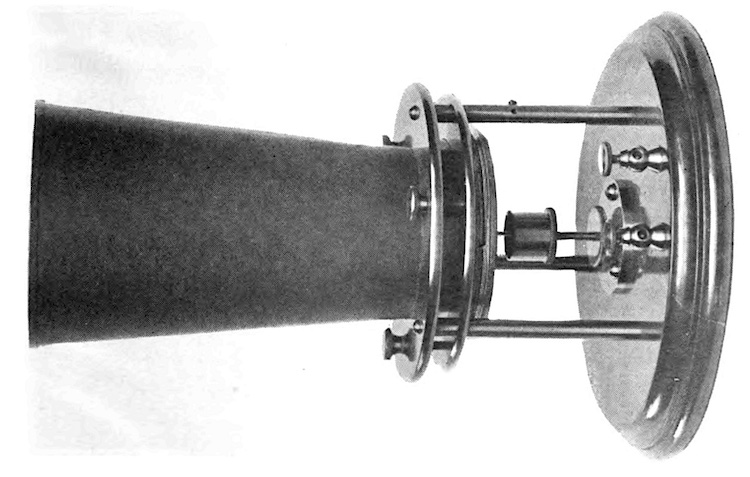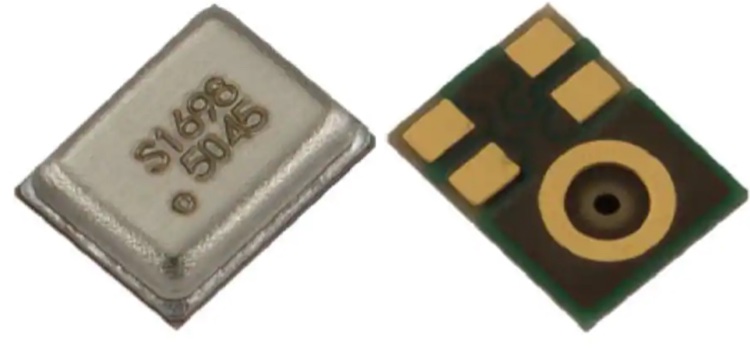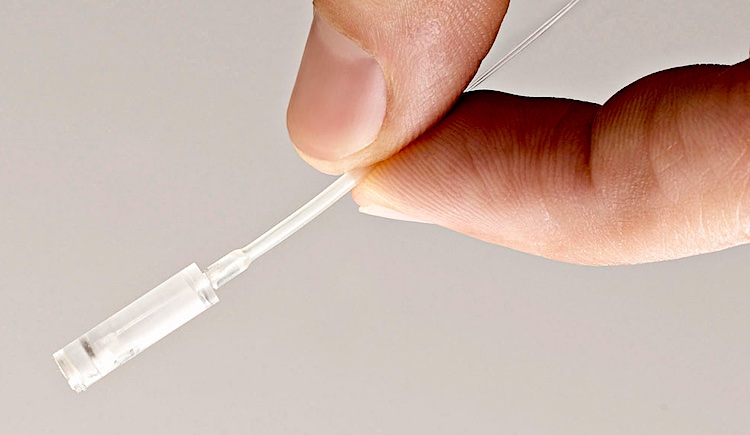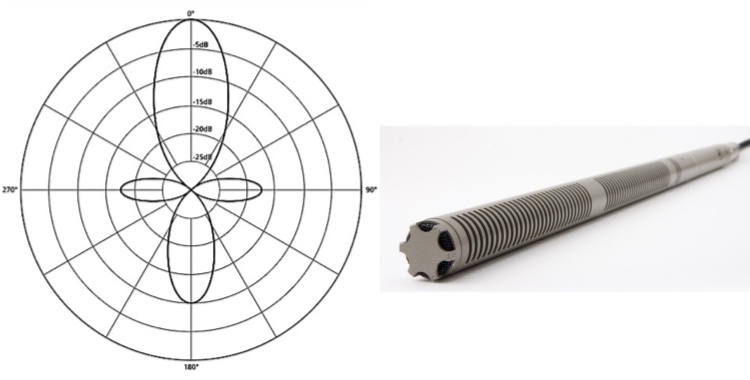When it comes to recording voice, guitar, piano, and other acoustic instruments in the studio or at home, you will want good sound-capturing equipment. However, to record the best sound possible, you must have a comprehensive knowledge of microphones and their applications.
A microphone is a device that converts sound into electrical signals. These signals are then processed by electronic amplifiers and various stages of audio transforming systems.
Today, microphones are used in a broad range of applications, including smartphones, hearing aids, motion picture production, radio and television broadcasting, and public address systems for live events.
The tricky part is figuring out what kind of microphone is best for a particular scenario. Not all microphones can be used for the same thing. There are many different types of microphones that employ different techniques to transform acoustical energy into electrical energy.
Below, we have categorized microphones based on two parameters: the transducer technique and their directional characteristics. The article will help you narrow down your choices and find the right device for the job.
Table of Contents
Based On Transducer Technique
A transducer is a device that converts variations in physical quantities, such as pressure, into electrical signals or vice versa.
A diaphragm is a thin plate that vibrates when it is hit with sound waves.
10. Laser Microphone
As the name suggests, this mic uses a laser beam to detect acoustic vibrations in a distant object. It can be seen as the pinnacle of spy technology as it doesn’t require any transmitter or power source near the person who is speaking or sound-generating object.
The laser beam is projected onto the object and bounced back. Sound waves from the object (or voices) are picked up with the laser beam and bounced back to the receiver, where audio is played on a speaker.
There is no such device available in the market (for security purposes, of course). However, in 2009, a patent was issued for equipment that uses a laser beam and vapor or smoke to detect sound vibrations in free air.
9. Liquid Microphone

- Poor audio quality
- Not commercially successful
- Inspired inventors to developed more advanced mics
A liquid microphone is based on Ohm’s law — current in a wire varies inversely with the circuit resistance. The mic contains a battery, needle, wire, and a metal cup with a diaphragm placed over the top. The metal cup is filled with water and a small amount of sulfuric acid.
The sound waves make the diaphragm vibrate, which causes the needle to move up and down in (conductive) sulfuric acid solution. This movement changes the resistance of the solution, causing the electrical current in the circuit (derived from a battery) to fluctuate.
Early liquid microphones were never widely used due to their poor audio quality, but they inspired many inventors to develop an instrument that could capture human voice effectively. In fact, liquid microphone designs led to the creation of the condenser microphone.
8. MEMS Microphone
 Top and bottom view of a MEMS microphone
Top and bottom view of a MEMS microphone
- Small in size
- Low power consumption
- Has high SNR (signal to noise ratio) and good sensitivity
- Compatible with a range of audio applications
Example: PDM Microphone MEMS by Knowles
Also known as silicon microphones, MEMS microphones are developed by using micro-electromechanical systems processing techniques. MEMS components are etched into a semi-conductive silicon wafer. The diaphragm is etched behind a stationary perforated plate so that together they can form a capacitor.
Like most MEMS technologies, these mics are fabricated on the production line using semiconductor silicon wafers and efficient automated processes. Multiple layers of various materials are stacked on top of the silicon wafer, and finally, unwanted materials are etched away.
MEMS microphones are available in very small packages. They target all audio applications that require high sound quality, reliability, and affordable, small-scale equipment. In the past decade, there has been increased interest in the development of piezoelectric MEMS mics.
Read: What Is MEMS (Micro-Electro-Mechanical System)? Types & Application
7. Speakers
 Medium-scale woofer placed near a ‘kick drum’ to act as a mic
Medium-scale woofer placed near a ‘kick drum’ to act as a mic
- Less sensitive
- Limited high- and low-end frequency response
- Can be used when traditional mics are not available
Example: Solomon LoFReQ sub microphone
Although they look very different, microphones and speakers use the same principle and parts to turn sound into electric signals and back again. All speakers can operate ‘in reverse’ as mics.
More specifically, the speaker cone act like a large microphone diaphragm. When attached to an amplifier for a recording instrument, it can be used to capture sound waves.
Speakers (not very rarely) are used as microphones in applications where high sensitivity and bandwidth are not necessary, such as video game voice chat devices and walkie-talkies. Another great example is a woofer placed near a ‘kick drum’ to act as a mic.
6. Crystal Microphone
 Vintage piezoelectric microphone manufactured by the Astatic Corporation
Vintage piezoelectric microphone manufactured by the Astatic Corporation
- Can be used easily at ultrasonic frequencies
- Omnidirectional and inexpensive
- Easily damaged by heat or moisture
Example:
The working of a crystal microphone is based on a phenomenon called piezoelectricity — the ability of certain solid materials to generate a voltage when subjected to mechanical stress.
This type of microphone uses piezoelectric materials to transform vibrations into electrical signals. Early mics used Rochelle salt due to its impressive output, but it was somewhat fragile and sensitive to moisture. Later devices used ceramic materials such as lead zirconate and barium titanate.
They were primarily used from 1930 to 1960 for home recording and small-scale paging market and later replaced by less expensive electret and dynamic microphones. Piezoelectric mics are still used to record sound in challenging environments (like underwater) and amplify sound from acoustic musical instruments.
5. Carbon Microphone

- Inexpensive and simple to manufacture
- Can tolerate high sound pressure levels
- Requires battery or other supply for its operation
- Has high background noise and poor frequency response
Example: Shure 104C omnidirectional push-to-talk microphone
A carbon microphone contains two metal plates separated by tiny grains of carbon. Each plate is attached to a wire that connects it to an audio receiver. The plate facing toward the speaking person act as a diaphragm. The top of the mic is covered with some plastic or metal sheet with holes in it, which allows sound waves to pass through.
When sound waves strike the diaphragm, it vibrates and exerts a varying pressure on carbon grains, altering the electrical resistance between the plates. This varying resistance causes current modulation, which produces a varying electrical signals.
Carbon mics were used in radio broadcast systems, telephones, and several other devices through the 1980s. They have been replaced by less noisy, higher-fidelity microphones. However, a few are still used in military installations and other applications that require cheap, durable, and less sophisticated mics.
4. Fiber Optic Microphone
 Miniature fiber-optic mic
Miniature fiber-optic mic
- Do not react with magnetic, electrical, or radioactive fields
- Resistant to moisture and heat
- Mostly used for noise canceling and infrasound monitoring
Example: SOM3/4/5SPL for monitoring high sound pressure levels up to 140 dB
Unlike other microphones that operate by sensing variations in magnetic fields or capacitance, a fiber-optic mic senses alterations in light intensity to transform acoustic waves into electrical signals. In this type of microphone, incident sound waves modulate the light guided in optical fibers without any external power.
The modulated light is then sent over another optical fiber to a photodetector so that it can be converted into digital or analog audio for transmission or recording. The mic’s light source and its photodetectors can be placed several miles apart without connecting any preamplifier.
These mics are used in particular applications, mostly for noise-canceling and infrasound monitoring. In hospitals, for example, fiber optic microphones allow doctors and patients to converse normally inside MRI suites and remote control rooms.
3. Ribbon Microphone
 Working principle of ribbon mics
Working principle of ribbon mics
- Captures highly dynamic, high fidelity sound
- Picks up sounds equally well from either side of the device
- Commonly used in sound reinforcement for acoustic guitars
Example: sE Electronics X1R Passive Ribbon Microphone
Ribbon microphones work by reacting to the alteration in the air velocity. They have a thin electrically conductive ribbon suspended between the poles of a magnet. When the ribbon vibrates, it produces a voltage corresponding to the changes in the air velocity of the sound source.
Older ribbon mics were integrated with a step-up transformer to strengthen the relatively low output to desirable levels. Newer models, however, contains better magnets and more efficient transformer that provide far batter output levels.
Most ribbon mics are passive devices, which means they have no preamplification or active electronics. A few (recently developed) active ribbons include onboard electronics that enable the device to deliver its full potential regardless of the input impedance of the preamplifier.
Although passive ribbon mics provide great sound quality when paired with a suitable preamplifier, active ribbons make it easier to achieve the same sound quality.
2. Dynamic Microphone
 Shure SM7B Cardioid
Shure SM7B Cardioid
- Can withstand high sound pressure levels
- Inexpensive and resistant to moisture
- Do not require external power
- Mostly used for live performances
Example: Shure SM7B Cardioid Dynamic Microphone
When it comes to sound and music, the term ‘dynamic’ can have a lot of meanings. In this case, it has to do with ‘dynamic performance’ or a ‘dynamic range.’ The working of these microphones is based on the principle of electromagnetic induction.
A dynamic mic features three things — a magnetic structure that produces a magnetic field; a conductive element where voltage can be taken via lead wires; a mechanism enabling relative movement between the magnetic field and the conductive element.
More specifically, a diaphragm is attached to a small movable induction coil which is placed around the permanent magnet. When sound waves enter the microphone, they vibrate the diaphragm. Due to this vibration, the coil moves in the magnetic field of a permanent magnet, generating a varying current in the coil via electromagnetic induction. And that’s how these microphones convert audio into electrical signals.
1. Condenser Microphone
 AKG Pro P220
AKG Pro P220
- Wider frequency response range than their dynamic counterparts
- Best suited for studio recording
- Can be small in design
Example: AKG Pro Audio P220 Vocal Condenser Microphone
Also known as a capacitor microphone or electrostatic microphone, a condenser microphone uses charged metal plates to convert sound into electrical signals.
It contains a pair of charged metal plates, one movable (the diaphragm) and one fixed (the backplate), forming a capacitor. When sound waves hit the diaphragm, it moves back and forth, changing the distance between the two metal plates. This produces the electrical signal corresponding to the sound picked up.
These microphones require voltages ranging from 11 to 52 volts to charge the plates. Typically, the power is provided either via a battery or is sent down the device cable itself.
This type of microphone is preferred for studio recording because it offers superior sound quality, wide frequency response, and the ability to precisely reproduce transients.
Read: 12 Largest Telescopes In The World
Best On Directional Characteristics
Every microphone has a polar pattern that shows where the mic listens spatially and which spots are blocked. Having a good knowledge of polar patterns will make it easier for you to select the best mic as per your specific requirements.
1. Omnidirectional Microphone

Best for: Studios and live recording of multiple instruments in low noise levels
As the name suggests, omnidirectional mics capture sound from all angles. In the real world, however, no device can provide a perfect sphere response in three dimensions. The smallest radius mic (approx 3 mm) offers the best omnidirectional properties at high frequencies.
Due to their non-directional design and no rejection ability, they effectively capture nuances, providing more natural sound than other mics. But since they cannot reject background noise, they are not used in loud and noisy environments.
2. Cardioid Microphone

Best for: Live performance and speech where feedback suppression is required.
Cardioid microphones capture sound in front while blocking everything else. This is the most common unidirectional mic that allows you to point the device to the sound source and isolate it from ambient sound.
They are used to record sound from loud instruments like guitar speakers and drum kits. It is important to position cardioid mics correctly because they can add subtle sound coloration when the source is off-axis, degrading the original sound quality.
3. Super and Hyper Cardioid Microphone
 Super and Hyper cardioid mic
Super and Hyper cardioid mic
Best for: Recording voices and loud sound sources in noisy stage environments
Super/hyper-cardioid mics have a tighter area of front sensitivity than cardioids. They provide better isolation and more feedback resistance. Their enhanced capability to suppress unwanted noise makes them useful in untreated recording rooms and noisy stage environments.
The only downside of this microphone is that its back noise rejection ability is slightly compromised. It can pick up the sound of the audience or instruments placed in the front.
4. Bi-directional Microphone

Best for: Stereo recording and capturing two or more sources
The pattern of bi-directional mics looks like the ‘figure-8.’ It captures the sound equally from both the back and front of the element. They are similar to omnidirectional microphones but with the additional capability to reject sound on two sides.
More specifically, omnidirectional mics are scalar transducers that respond to pressure from all directions, and bi-directional mics are vector transducers that respond to the gradient along an axis normal to the diaphragm plane. They are mostly used in ribbon microphones and some large diaphragm.
5. Shotgun

Best for: capturing drum cymbals and singing groups
The tube-like design of shotgun microphones offers the most highly directional sensitivity. The interference tube provides an increased forward response at medium and higher frequencies. It rejects sound from the sides through phase cancellation.
Because of the narrowness of their forward sensitivity, shotgun mics are mostly used in stadiums, film sets, and for recording wildlife on the field.
Read: 5 Quantum Processors That Feature New Computing Paradigm
6. Multi-pattern Microphone
 Senal UC4-B USB mic
Senal UC4-B USB mic
Example: Senal UC4-B USB multi-pattern microphone
Multi-pattern microphones offer specific sound isolation, enabling you to tailor the device to the sound source or the vocal style of a singer. You can use them to decrease feedback, control proximity effect, and create a sonic images using the full spectrum of stereo-miking techniques.
Read: 5 Different Types Of Microscopes And Their Applications
Modern USB condenser mics have this feature: you can select a particular pattern by simply flicking a switch or changing the head of the microphone. Obivously, the biggest benefit of this type of mic is that you get to test the quality of sound in various conditions at affordable price.


